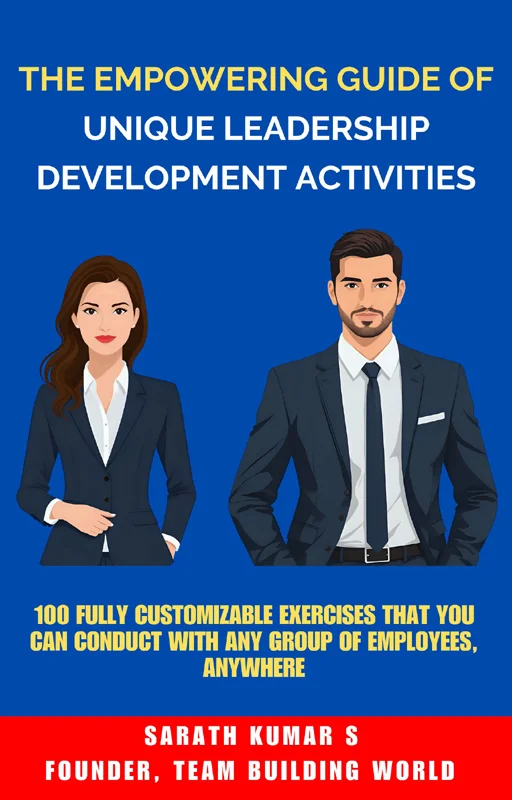10 Talent Retention Strategies for Leaders
Are you in search of some talent retention strategies?
Retaining top talent is one of the greatest challenges leaders face in today’s competitive job market. Employees are an organization’s most valuable asset. Keeping them engaged, motivated, and loyal is essential for long-term success.
In this article, let’s see 10 strategies leaders can implement to retain their best employees. They can help you create a positive workplace and ultimately reduce employee turnover.
Why is Talent Retention Important?
Before we dive into the strategies, let’s understand why talent retention should be a top priority for leaders. Here are some reasons:
Cost-effective: Hiring and training new employees can be costly for organizations. Retaining existing employees reduces these costs and improves the bottom line.
Maintains company culture: When top performers leave, it can disrupt the team dynamics and negatively impact the overall company culture.
Improves productivity: Experienced and engaged employees are more productive, contributing to increased efficiency as well as profitability.
Boosts employee morale: When employees see their peers staying long-term, it fosters a sense of stability and belonging, boosting overall morale within the organization.
Enhances customer satisfaction: Long-term employees build stronger relationships with customers, leading to more personalized service and improved customer loyalty.
Retains institutional knowledge: Experienced employees possess critical knowledge about the company’s processes, systems, and history, which can be hard to replace if they leave.
10 Talent Retention Strategies for Leaders
Here are some practical talent retention strategies that leaders can implement to retain their top employees.
#1. Foster a Positive Work Culture
Creating a positive work culture is essential for retaining talent and boosting employee satisfaction. Leaders should prioritize creating an environment where employees feel valued and supported. To achieve this, consider the following key actions:
- Encourage open communication to ensure employees feel heard and understood.
- Recognize and reward achievements to boost morale as well as motivation.
- Promote work-life balance through flexible schedules or remote work options.
- Provide opportunities for professional growth, such as training and development programs.
- Build trust and transparency by sharing company goals as well as challenges openly.
You can also read: 10 Employee Relations Activities for Leaders
#2. Offer Competitive Compensation and Benefits
Attracting and retaining top talent requires more than just a good work environment—it also involves offering a competitive compensation package. Employees are more likely to stay with a company that values their contributions and provides tangible rewards. To achieve this, focus on the following benefits:
- Provide salaries that are at or above industry standards to remain competitive.
- Offer comprehensive health insurance plans that cater to diverse employee needs.
- Include retirement plans, such as 401(k) matching, to support long-term financial security.
- Provide paid time off, including vacation, sick leave, and mental health days, to encourage well-being.
- Incorporate additional perks like wellness programs, childcare assistance, or transportation benefits.
#3. Provide Opportunities for Growth
Investing in employee growth is essential for fostering engagement and retention. Companies should actively provide avenues for professional development and skill enhancement. Some effective strategies include:
- Hosting regular training programs and workshops to build expertise.
- Offering tuition reimbursement or sponsorships for further education.
- Encouraging mentorship programs to guide employees in their career paths.
- Providing clear paths for internal promotions and advancements.
- Supporting participation in industry conferences or networking events.
#4. Recognize and Reward Performance
Recognizing as well as rewarding employee performance is crucial for maintaining motivation and fostering a positive work environment. A thoughtful approach to acknowledgment can boost morale and encourage continued excellence. Some effective ways to recognize and reward employees include:
- Providing public recognition during team meetings or company-wide updates.
- Offering monetary incentives such as bonuses or gift cards tied to performance.
- Granting additional paid time off as a token of appreciation.
- Introducing employee-of-the-month programs to celebrate achievements.
- Allowing employees to choose their preferred rewards to ensure personal significance.
#5. Communicate Effectively
Clear and open communication is essential for fostering collaboration as well as building trust within any organization. Establishing effective communication channels ensures that employees feel heard, valued, and informed about key updates or changes. To achieve this, organizations can:
- Schedule regular team meetings to provide updates and encourage dialogue.
- Use multiple communication tools, such as email, instant messaging, and project management platforms.
- Offer training on communication best practices to enhance skills across the workforce.
- Encourage managers to schedule one-on-one check-ins with team members.
- Create an open-door policy to make leadership accessible for feedback or concerns.
#6. Encourage Work-Life Balance
Promoting work-life balance is essential for maintaining a healthy, happy, and productive workforce. Organizations can implement strategies that support employees in managing their professional and personal responsibilities effectively. To achieve this, companies can:
- Offer flexible working hours to accommodate different personal needs and schedules.
- Provide remote work options where feasible to give employees greater control over their time.
- Encourage employees to take regular breaks and use their vacation time.
- Establish clear boundaries, discouraging work communications outside of designated hours.
- Introduce wellness programs, such as mental health resources or fitness incentives, to support overall well-being.
#7. Invest in Leadership Development
Strong leadership is essential for driving an organization forward and fostering a positive workplace culture. Investing in leadership development ensures that managers have the skills and tools needed to lead effectively. So, consider the following things:
- Provide training programs focused on communication, problem-solving, and decision-making skills.
- Offer mentorship opportunities for new or emerging leaders to learn from experienced professionals.
- Encourage continuous learning through workshops, certifications, or online courses.
- Conduct regular evaluations to identify strengths and areas for improvement in leadership practices.
- Create opportunities for leaders to collaborate and share best practices with their peers.
#8. Gather Employee Feedback
Employee feedback is a vital component of fostering a positive and productive workplace environment. It helps organizations identify areas for growth, improve communication, and ensure employees feel valued. For this, consider the following:
- Use anonymous surveys to encourage honest and unbiased input from employees.
- Schedule regular one-on-one meetings to provide a platform for open dialogue.
- Establish feedback channels, such as suggestion boxes or online portals, for ongoing input.
- Actively seek feedback about workplace policies and initiatives to gauge their effectiveness.
- Demonstrate commitment to acting on feedback by communicating changes or improvements based on employee suggestions.
#9. Build a Sense of Purpose
A strong sense of purpose can significantly enhance employee engagement and satisfaction. When employees understand how their work contributes to the organization’s mission, they feel more motivated and fulfilled. To build a sense of purpose in your organization:
- Clearly communicate the company’s core values and mission statement.
- Highlight how individual roles align with the broader organizational goals.
- Share stories of how your organization’s work positively impacts customers or communities.
- Recognize and celebrate employee achievements that reflect the company’s purpose.
- Encourage collaboration on meaningful projects that align with shared values.
#10. Promote Team Collaboration
Effective team collaboration is essential for achieving organizational success and fostering a positive work environment. To encourage collaboration, focus on creating an inclusive as well as supportive culture where everyone feels valued and heard. Here are five key strategies to promote team collaboration:
- Hold regular meetings to discuss shared goals and progress.
- Encourage open communication by creating channels for idea-sharing and feedback.
- Provide team building activities to strengthen relationships and trust.
- Use collaboration tools as well as technology to streamline workflows and enhance productivity.
- Define clear roles as well as responsibilities to ensure accountability and prevent misunderstandings.
Common Mistakes to Avoid When it Comes to Talent Retention
Retaining top talent is essential for any organization’s long-term success, yet many businesses struggle due to avoidable errors. Understanding these common mistakes can help improve employee satisfaction and reduce turnover.
Neglecting Employee Development
Failing to invest in employee growth through training and skill development leads to stagnation as well as dissatisfaction. Employees who feel unsupported are more likely to leave for better opportunities elsewhere.
Poor Communication
Lack of clear as well as consistent communication creates confusion and frustration among team members. This can result in misaligned goals, decreased morale, and disengagement.
Ignoring Employee Feedback
Disregarding feedback from employees signals that their opinions are undervalued. Over time, this damages trust and discourages open communication within the workplace.
Offering Uncompetitive Compensation
Paying below industry standards or failing to provide proper benefits makes it difficult to retain skilled employees. Competitive compensation shows your team that their work is valued.
Overworking Staff
Excessive workloads and lack of work-life balance lead to burnout as well as resentment. Employees who feel overburdened are less likely to remain with the organization long-term.
Failing to Recognize Achievements
Overlooking the efforts and accomplishments of employees leads to feelings of underappreciation. Acknowledging contributions boosts motivation and loyalty.
Want Some Unique Leadership Development Activities?
If you want some unique activities to equip your employees (both in-person and virtual) with leadership skills, qualities, and mindset, you can get my new e-book:
Or Want Some Unique Team Building Activities?
If you want some unique activities for your employees (both in-person and virtual), you can get my new e-book:
Final Words
Retaining top talent requires intentional effort and a commitment to supporting employees’ growth as well as well-being. By implementing these strategies, leaders can create a workplace where employees are inspired to stay and thrive. Building a loyal, motivated team is not only beneficial for employees but is also key to driving organizational success. So, invest in your employees and see the positive impact it has on your company’s culture as well as bottom line. Remember, happy employees make for a successful organization!
FAQ: Talent Retention Strategies
You might have these questions in mind.
What are the most effective strategies for retaining top talent?
Focus on fostering a supportive work environment, offering competitive compensation, and providing opportunities for professional development. Employees are more likely to stay when they feel valued and have room to grow. Tailoring retention strategies to individual needs can also make a significant difference.
How can leaders foster employee engagement?
Encourage open communication and recognize employees for their contributions regularly. Create opportunities for collaboration and empower employees with decision-making authority. A sense of ownership and appreciation can greatly enhance engagement levels. By prioritizing these practices, leaders can build a motivated and committed workforce that drives organizational success.
What role does workplace culture play in retention?
A positive and inclusive workplace culture is foundational to long-term retention. A culture that values respect, diversity, and innovation helps employees feel connected as well as aligned with the organization. When employees share the organization’s values, they are more likely to remain committed.
How can professional development impact retention?
Offering ongoing learning opportunities shows employees that their growth is a priority. Programs such as mentoring, training, and career advancement pathways help build loyalty. Employees are more likely to stay when they see a clear trajectory for their professional future. Additionally, professional development can also increase employee satisfaction and engagement, which in turn leads to higher retention rates.
How can companies create a culture of feedback?
Creating a culture of feedback starts with open and transparent communication. Encouraging employees to share their thoughts and ideas freely without fear of repercussions is crucial. Companies can also implement regular surveys or focus groups to gather feedback anonymously. Additionally, providing opportunities for one-on-one meetings with managers or creating mentorship programs can facilitate more personal and honest discussions.

